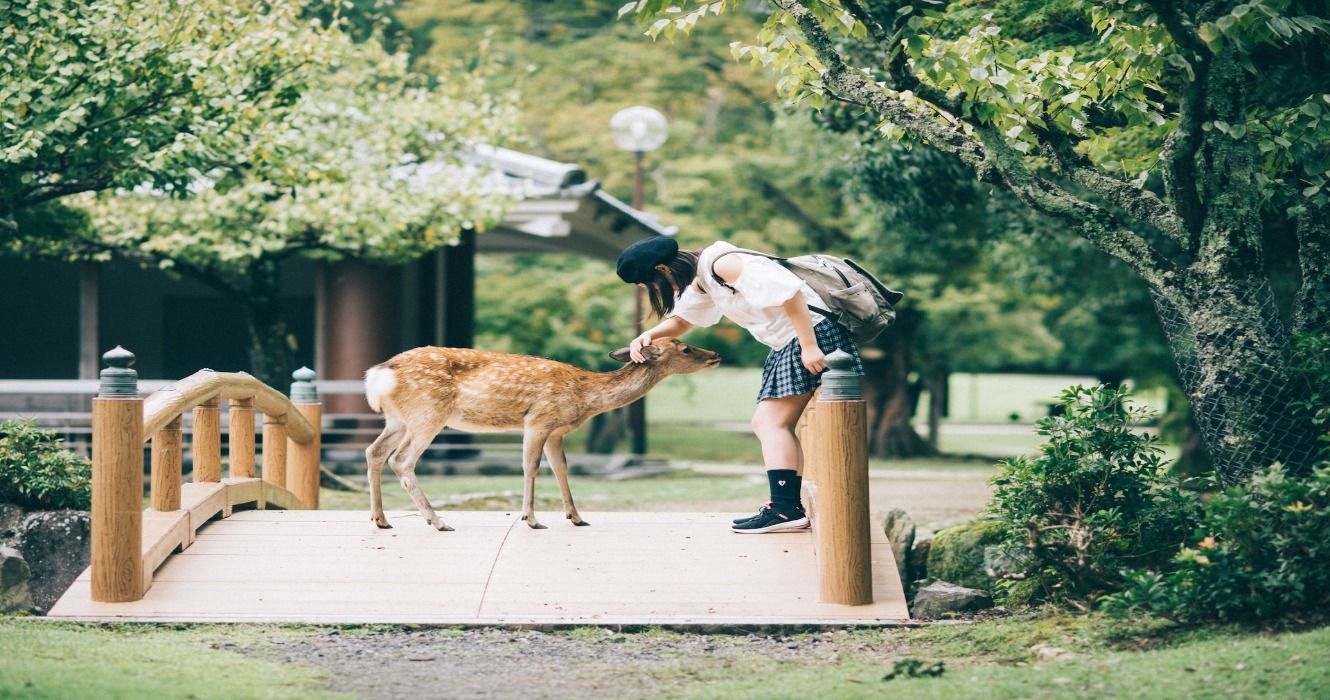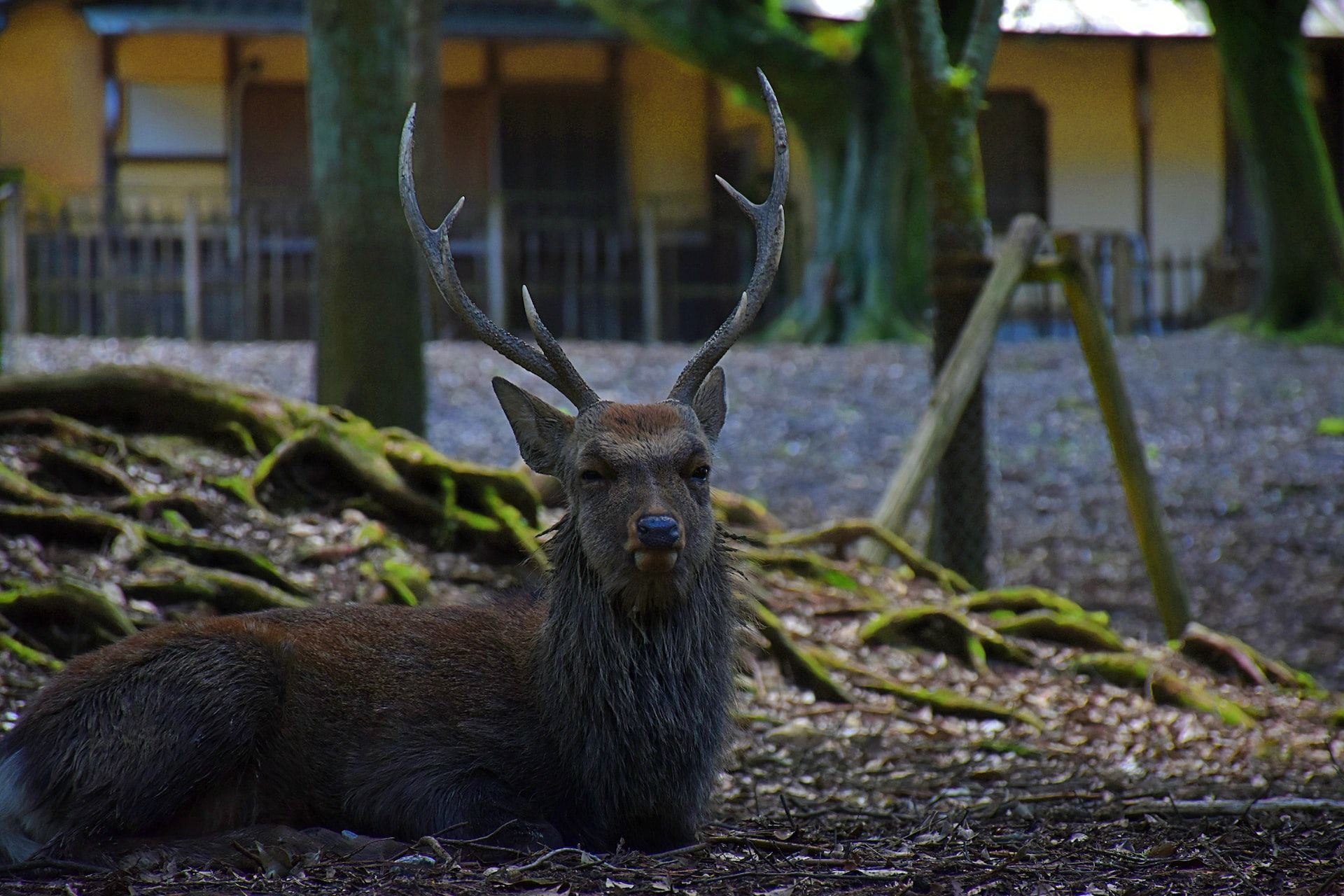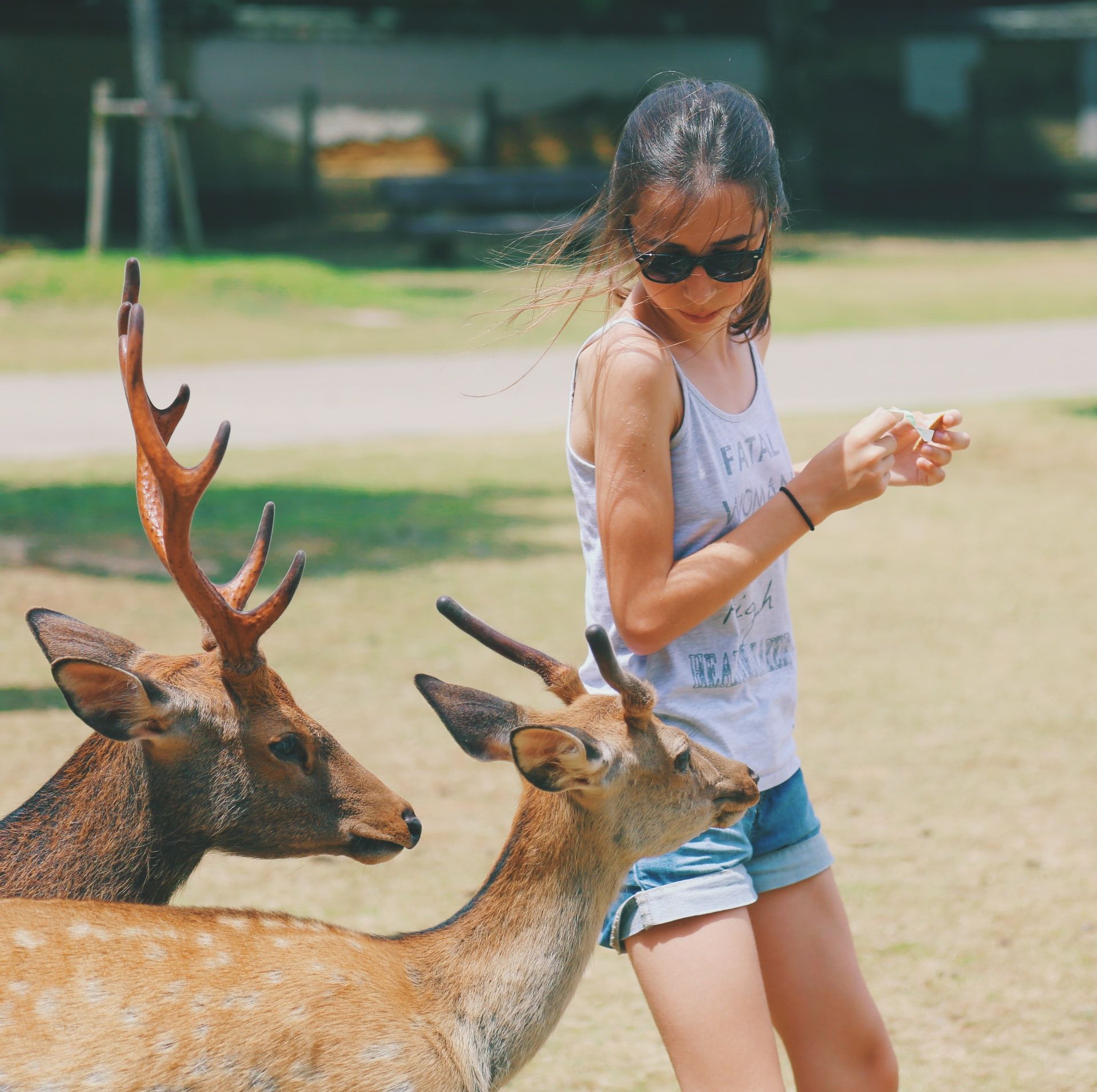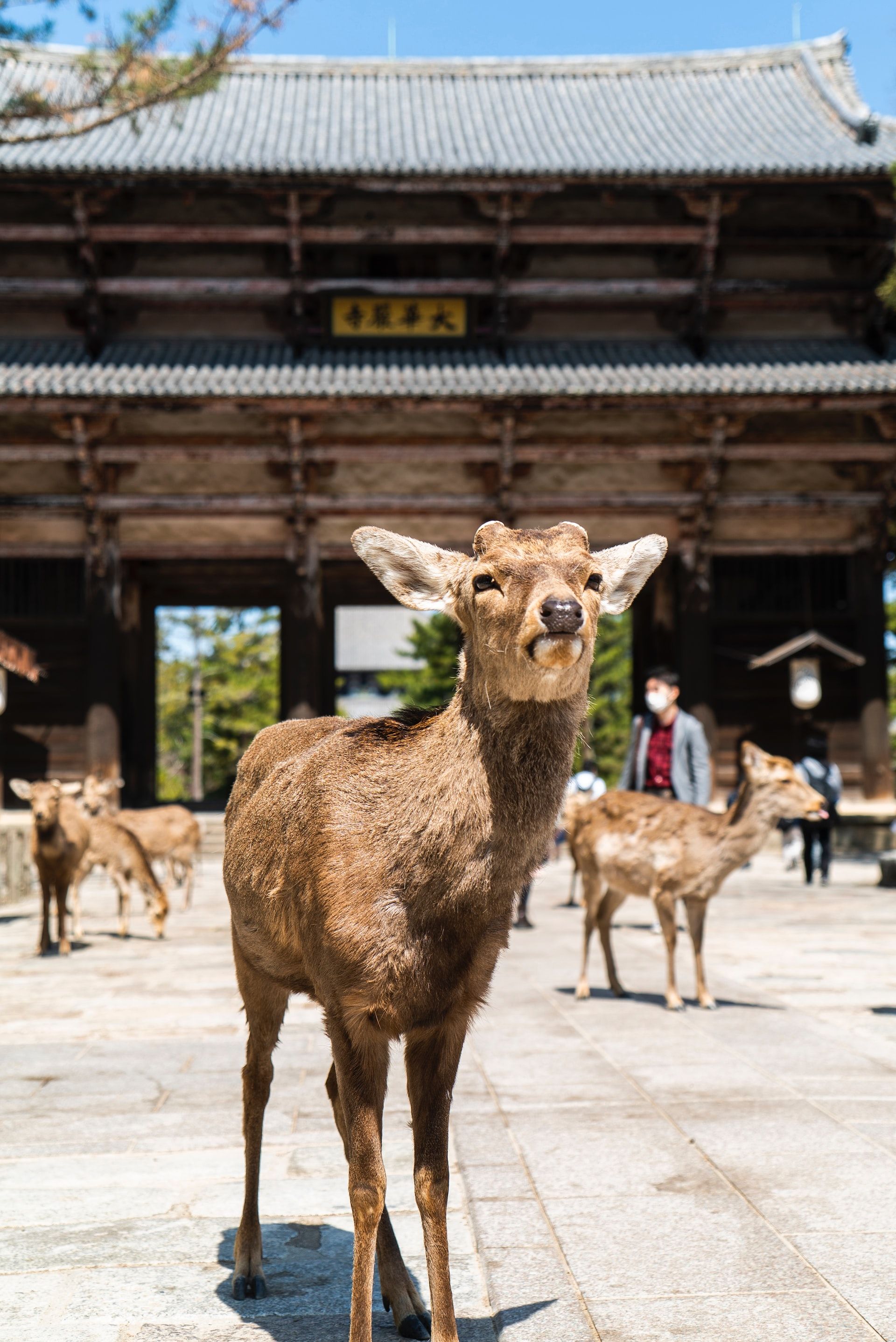Quick Links
Japan is one of those countries that people just can't help but fathom over. Japan has some incredible city and countryside destinations, meaning it offers visitors the best of both. The country has a slew of different terrains including the mountains, forests, and beaches. It has a rich culture full history and even sport. Plus, exploring Japan's art scene is a must, proving just how diverse the Land of the Rising sun's culture, activities, and attractions truly are. However, an important piece of Japan that many people may have not heard of before is the deer that reside in the Nara Prefecture.
Nara is one of the main cities in the northern region of the Nara Prefecture that is just a 45-minute train from the famous historic center of Kyoto. It sits nicely in the northeastern Nara Basin, which is a 660 hectare area that is known for over 1,400 deer and the Todaiji Temple. The deer inside this prefecture have strong ties to Japanese culture. Being in the deer's presence is an honor, and it is important to respect them. Below is important information and tips that everyone should know about the deer.
The History Of Nara And Its Deer Population
As legend goes, in AD768, there were four gods of the Kasugatausga Shrine: Ame No Koyane, Himegami, Futsunushi No Mikoto, and Takemikazuchi. The gods had to travel from Ibaraki Prefecture, which is north of Tokyo, across the country to Mt. Mikasa in Nara on a white deer. After the deer took upon this noble task, deer have been viewed as sacred. In 1177, a nobleman named Kujo Kanezane saw a large pack of deer when visiting Nara. When he helped rebuild the Todaiji Temple after a fire in 1189, a deer appeared at the main entrance of the temple. He took this deer as a lucky sign.
During the 8th century, Nara was the capital of Japan and was where several significant temples were built. Among these temples is Todaiji, the largest wooden structure in the world and a UNESCO World Heritage Site. The temple was built to protect the Japanese from the smallpox epidemic. The deer throughout Nara are seen as spiritual messengers that would travel throughout the town and in between temples like Todaiji. Now, the deer travel to Nara to be fed by tourists. They are protected as natural monuments, and it is a crime to kill a deer.
Today, when visitors enter Nara via train, they pull up to a station that is decorated with a large amount of deer art. Their two mascots are also at the station; their names are Sento-Kun and Shikamaro-kun. The mascots represent the long-lasting friendship that the locals and deer have had with one another. The deer peacefully roam throughout the park and have learned to bow to visitors in return for rice crackers that visitors buy from vendors in the park. The deer also enjoy being petted and are respected by visitors. The deer mimic other human behavior, such as waiting to cross the street and posing for pictures with visitors. When humans wave goodbye to the deer, they either walk away or push the visitors when they begin to leave. Below is all the information that you should know about the Nara deer before visiting.
Important Rules To Follow When Visiting The Nara Deer
- Tourists should be conscious about having their hands free. The deer commonly mistake anything in visitors' hands for food and will try to eat it. When tourists have nothing in their hands, they will leave them alone.
- Do not litter in the park. Deer could mistake the garbage as food and digest it. As a result, the deer could die.
- Only feed the deer the special rice bran and flour crackers that vendors sell around the park. The deer in Nara are herbivores and may experience health issues if they consume other forms of food.
- Hide the bag of rice crackers immediately after buying them from vendors. This will prevent the deer from following visitors.
- When tourists want to feed the deer, they have to make sure to split the cracker into two so that it is easier for the deer to swallow.
- Make sure to not leave small children unaccompanied with the deer.
- Everyone should keep their distance from fawns. The fawns’ mothers may stop feeding them if they smell humans on their offspring.
- Refrain from teasing the deer when feeding them. This could lead people to getting hurt by the deer.
- Make sure to not be visibly timid or nervous in front of the deer. They tend to be more aggressive when they see someone acting in this particular way. Everyone should refrain from running away from the deer so that they do not get chased.
When To Visit Nara To See The Deer
The best time to visit Nara and its deer population is in October/November and during the spring. Generally, spring is one of the best times to visit Japan as a whole, not just Nara. Although Nara has a temperate climate, the summers are typically hot and humid. During the early summer, it is also the monsoon season and would not be as pleasant to visit the deer in Nara while it is wet and muddy. The winters in Japan are also cold and desolate. Overall, Japan is a rich and diverse country, from temples to technology.Nara is a place that people must visit if they are ever in Japan; it's one of the only places in they world where visitors can feed deer as they come up to people at this UNESCO World Heritage Site - a sacred, beloved place that's one of the best national parks in Japan.




